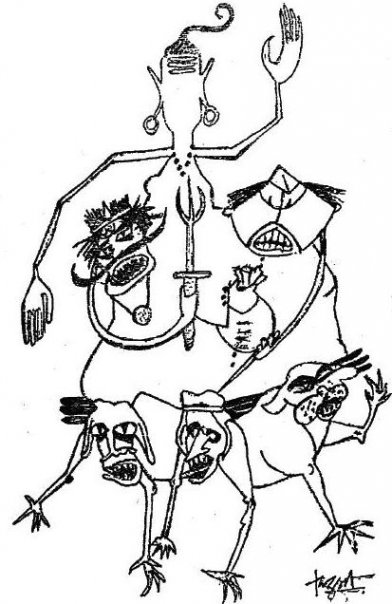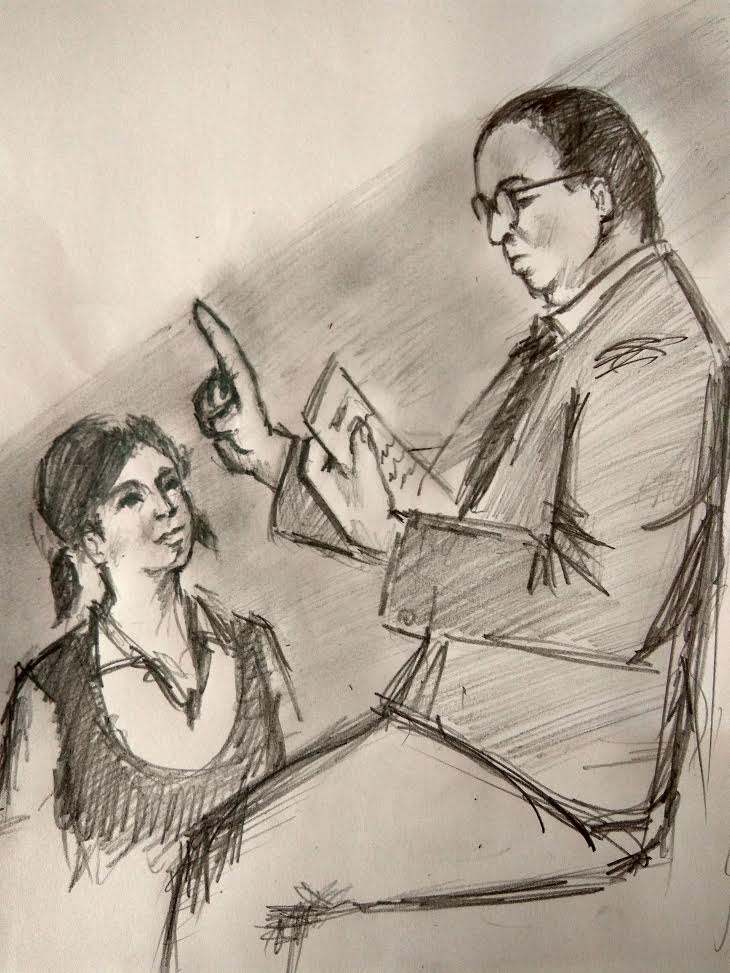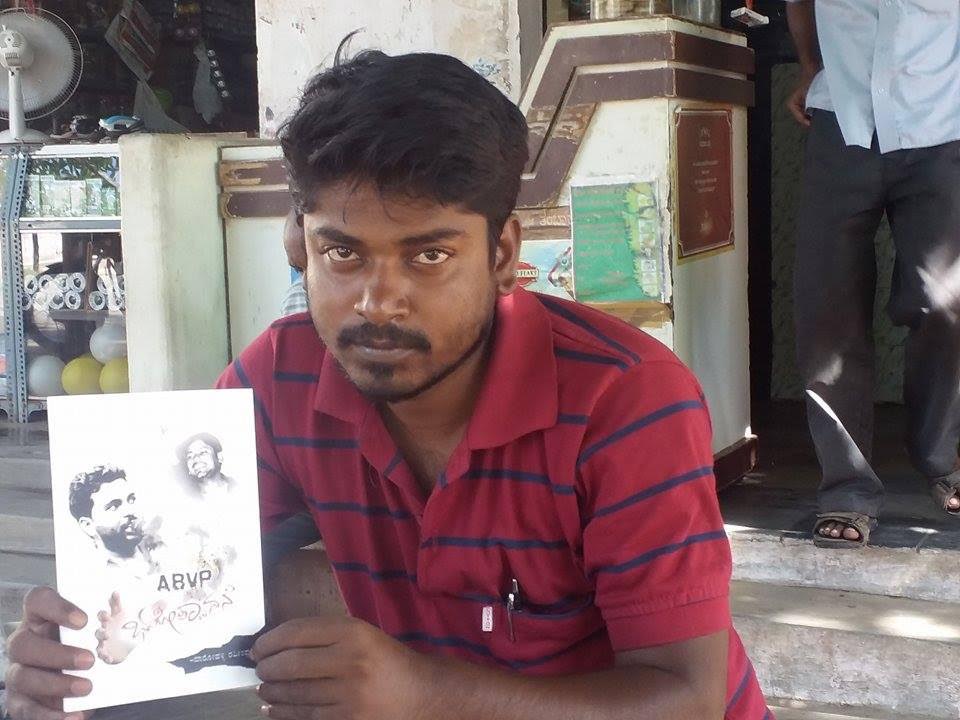Anoop Kumar & Ashokan Nambiar
[Published in INSIGHT, a Dalit students’ magazine, Jan-Feb 2005 issue, with the title ‘Following Tsundur: Taking stock of path to justice’]
While preparing the last issue of Insight [Nov-Dec 2004] that was based on caste atrocities we were shocked at the poor conviction rate in the massacres of Dalits. Almost in every case, the judiciary acquitted the accused citing lack of evidence to punish them. These are not cases dealing with simple law and order problems. Every massacre was well planned and has a long history behind it. They are not spontaneous acts. Then why do the perpetrators go unpunished?
With this question in our mind we got the opportunity to experience first hand this strange and shocking phenomenon. Through our friends in Hyderabad we came to know about the trial which started in December last year. We were very much interested in visiting Tsundur and telling its story to other parts of the country.
Lest we forget
How would you feel if someone kills your nearest ones right in front of your eyes and wanders freely in front of you for a solid 13 years? Can’t say? Cannot even imagine. But that is what has happened to the Dalit community in Tsundur village ever since the brutal massacre in which eight among them were killed on 6 August 1991.

According to eye witnesses, on that day, the police started lathi-charging the Dalitwada early in the morning forcing the Dalit men to run away from their homes. By then a mob of more than 300 well armed “upper” caste Reddys had surrounded the village. Those who tried to escape fell in to a well-laid trap. Eight of them were brutally massacred, their bodies cut into pieces and stuffed into gunny bags and were thrown in the nearby Tungabhadra canal.
Dhanraj, who is in his early 30s, is a living victim of the brutality carried out by the Reddys on that day. A slight bend in his right hand stands as a testimony to what had happened to him. He himself witnessed the murder of four of his fellow men as he was trying to escape. But he couldn’t run far and he was surrounded by a group of more than 40 well armed Reddy men. He was brutally beaten up, stabbed in his head, and his right hand twisted. Later he was dragged to the nearby banana orchard. When he asked for water, “they urinated into my mouth and forced me to drink. Later they took a syringe and extracted blood from my body” he says. But somehow he escaped from the eyes of the mob and crawled into the nearby canal and floated along with the tide. When he reached the other side, some Dalit women saw him and dragged him out of the canal. Later they wrapped him in a saree and took him to the nearby railway station and from there to a Guntur hospital. Today he is a crucial witness for the ongoing trial.
The incident left a scar in the minds of the victims. Mundru Parishudha Rao died of a heart attack after seeing the dead bodies in a hospital in Tenali.
The Dalits in Tsundur firmly believe that the reason behind the massacre is nothing but jealousy which had developed among the “upper” caste Reddys against Dalits whose lives had considerably improved, mainly due to education. Many Dalits got government jobs, especially in railways, and most of the youth attended colleges. There were minor altercations between Dalit youth and Reddy youth mainly because the Dalits would no more bow down to their fancies.
Despite the gruesome nature of the incident and that this had happened in broad daylight, it took more than 13 years for the trial to start. Compensations were given- almost all the relatives of the victims were given government jobs; financial assistance was given to almost everyone to set up a home. A residential school was started in the Dalit wada. But the big question is: Can any of these compensate for the personal loss the Dalits in Tsundur suffered?
Dalits in Tsundur have been struggling for the past 13 years for justice because of which the special court started trial in February 2005. The special court functions within the Dalit wada. It is a land mark victory on the part of Dalits that they got the justice system to come to their village. Organizations like Democratic Action Forum for Dalits and Minorities, Kuluvivaksha Vyatirekha Porata Samithi, and Kulanirmulana Porata Samiti have been active in this struggle.
One day Inside a Court
The main thing that struck us was the kind of reaction which this incident (together with the Karamchedu Massacre of 1985) produced in the emerging Dalit intelligentsia and masses. Andhra Pradesh has a long history of Dalit movement. But these incidents galvanized Dalit masses and they started agitating for exemplary punishment to the criminals involved.
The Dalit massacres do not pertain to any one region. For every Tsundur there is a Jehanabad, Jhajjar. But the incidents in Hindi heartland have one peculiar characteristic: there the Dalit victims do not get much support from the masses, especially Dalit masses to carry on their legal battle. How many of us know what happened in the Jehanabad trial or the legal status of Jhajjar? Whether the court proceedings have even started? Nobody who consider themselves as part of the Dalit movement has answers.
Here lies the uniqueness of Tsundur. Whatever may be the final outcome of the trial but the Dalits here did not sit idle. They organized themselves and forced the casteist state apparatus to fulfill their demands. This was not achieved overnight. It took full a 13 years. The casteist State tried to silence them. Police shot and killed the main witness Anil Kumar. He was participating in the protest organized by Dalits. During the police firing, none of the other protestors were even injured. It is clear that the killing of Anil Kumar was cold blooded murder. With this we can easily make out the enormous odds faced by Tsundur Dalits in their quest for justice.
On the morning of 9th February we reached Tsundur to cover the trial. The village is situated near the railway station. All around one can see lush green fields. The main road from the station led us straight to the caste hindu locality. As we reached, we decided to take a look at the village before going to meet Moses, the President of the Tsundur Carnage Victims Association, whose father was killed in 1991. The divide between dikus and Dalits is clear. On one side there are big houses one can only see in cities and on the other side is the Dalit wada, situated at a distance having one room thatched huts. Another interesting thing that struck us was that in the Reddy part of the village the tension was palpable, the kids were being sent off to schools, but everything else seemed a little out of sync. But an unnatural calm prevailed over the Dalit wada where old and young went about their daily chores as usual. There was nothing to show that any significant event was going to take place.
At Moses’ place we met Dhanraj, who recounted the massacre to us in broken Hindi. Every time a Reddy walked past our conversation, Dhanraj’s chest would broaden and his voice would get louder. He was reminding the Reddys that he had not finished telling his story. After a quick detour to the canal and the burial ground we reached the court.
The case has been dragging on for 13 years. Initially the Reddys argued that they had the right to massacre the Dalits because they were Christians and did not come under the SC/ST Prevention of Atrocities Act. The matter went to the High Court which decided in favour of the Dalits. The Dalits then demanded that the court sit in the village itself, as they would be unable to travel to the district headquarters for the sessions. The Government agreed to this demand, but it did not take any steps in this regard. Dalits refused to take summons from the district court forcing the court to be shifted. The Reddys objected to the court sitting in the village itself, prolonging the trial even further. After many years, the High Court dismissed this. The Dalits also demanded special public prosecutors. Public prosecutors are decided by government patronage and the Dalit community wanted their own prosecutors in whom they had confidence. It took five more years to appoint special public prosecutors, but it was still an unprecedented victory.
Before going to the court we went to the public prosecutor to discuss the case. He was satisfied with the progress and was certain that the accused will be punished, but he was very frustrated with the faulty FIRs that were lodged by the police at the time of massacres. The FIRs made a hotchpotch of the crime scene with cooked up witnesses who would not be able to hold their own under cross-examination, contradictory versions and such like. It has taken much ingenuity on part of the prosecution to get over these obstacles.
In court that day both the witnesses were women from the Dalit wada. They gave their testimony and were able to identify the accused. But the structure of the court was a big impediment. The prosecutors were talking to the witnesses in Telugu and arguing with the judge in English, leaving the witness in constant doubt about the fate of her testimony, whether it was being misinterpreted. This was only balanced by the fact that the witnesses were convinced of the integrity of the public prosecutors.
It is important to underscore the importance of local Dalit involvement in the struggle. Dalit organizations form the state and local levels have been involved in every step of the way: dealing with technicalities, chalking out strategies and publicizing the massacre. Nothing was left in the hands of the Government or political parties. This is an important lesson as such involvement has also proved to be a major discouragement for Reddys to retaliate. The Dalits of Tsunduru were not left on their own, and this is now paying dividends.
The community consciousness is better reflected when we notice the demands of Tsunduru Dalits. Compensation was asked not only for individual families but also for infrastructure in the village such as better roads, pucca homes and land for all. The cinema theatre where the massacre was sparked off has been converted into an Ambedkar Residential School only on their demand. The case was never made out to be about a few families. A strong Ambedkerite consciousness has prevailed throughout and this has kept the Dalits, both villagers and from other parts of the state involved.
Some of the Dalits are still forced to work under the Reddys and hence are susceptible to their influence. This combined with the apathy of the media and the antagonism of the police makes it a very precarious situation.
Tsundur is making history. Never has the Dalit movement come so close to such a large conviction following a massacre. It is important that we rally around them. They need activists and well-wishers to visit Tsundur. This increases the victims’ morale and also provides them with a sense of protection as the more public this becomes the more scared the Reddys will be to do anything foolish.
~
Please also read other related articles on the issue:
‘The whole system is in their hands, including the judicial system’: Bojja Tharakam
Brahmanical Courts and the Death of Justice: by N. Sukumar and Shailaja Menon
Tsunduru trial: Judge drops contempt charges against Bojja Tharakam
Tsunduru says: ‘You just fight back’: by Unnamati Syama Sundar
Duddu Prabhakar: Dalit movement at a crossroads
~~~
Illustration by Dr. Harish Wankhede (JNU, New Delhi); Courtesy:Insight Magazine (Nov-Dec 2004).









